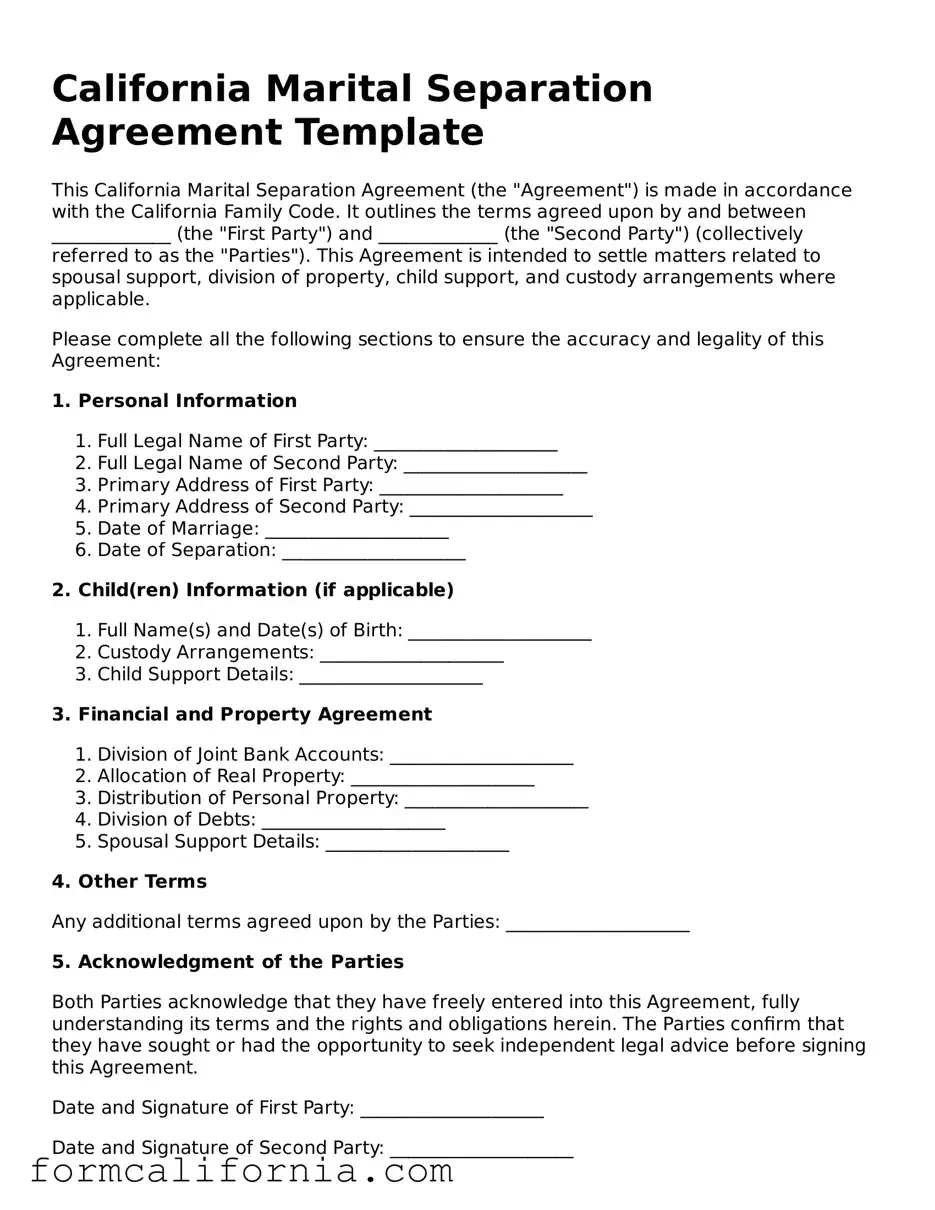California Marital Separation Agreement Template
This California Marital Separation Agreement (the "Agreement") is made in accordance with the California Family Code. It outlines the terms agreed upon by and between _____________ (the "First Party") and _____________ (the "Second Party") (collectively referred to as the "Parties"). This Agreement is intended to settle matters related to spousal support, division of property, child support, and custody arrangements where applicable.
Please complete all the following sections to ensure the accuracy and legality of this Agreement:
1. Personal Information
- Full Legal Name of First Party: ____________________
- Full Legal Name of Second Party: ____________________
- Primary Address of First Party: ____________________
- Primary Address of Second Party: ____________________
- Date of Marriage: ____________________
- Date of Separation: ____________________
2. Child(ren) Information (if applicable)
- Full Name(s) and Date(s) of Birth: ____________________
- Custody Arrangements: ____________________
- Child Support Details: ____________________
3. Financial and Property Agreement
- Division of Joint Bank Accounts: ____________________
- Allocation of Real Property: ____________________
- Distribution of Personal Property: ____________________
- Division of Debts: ____________________
- Spousal Support Details: ____________________
4. Other Terms
Any additional terms agreed upon by the Parties: ____________________
5. Acknowledgment of the Parties
Both Parties acknowledge that they have freely entered into this Agreement, fully understanding its terms and the rights and obligations herein. The Parties confirm that they have sought or had the opportunity to seek independent legal advice before signing this Agreement.
Date and Signature of First Party: ____________________
Date and Signature of Second Party: ____________________
This Agreement is executed under the laws of the State of California and shall be governed by and construed in accordance with these laws. It constitutes the entire agreement between the Parties pertaining to the subject matter hereof and supersedes all prior agreements, understandings, negotiations, and discussions, whether oral or written, of the Parties.
